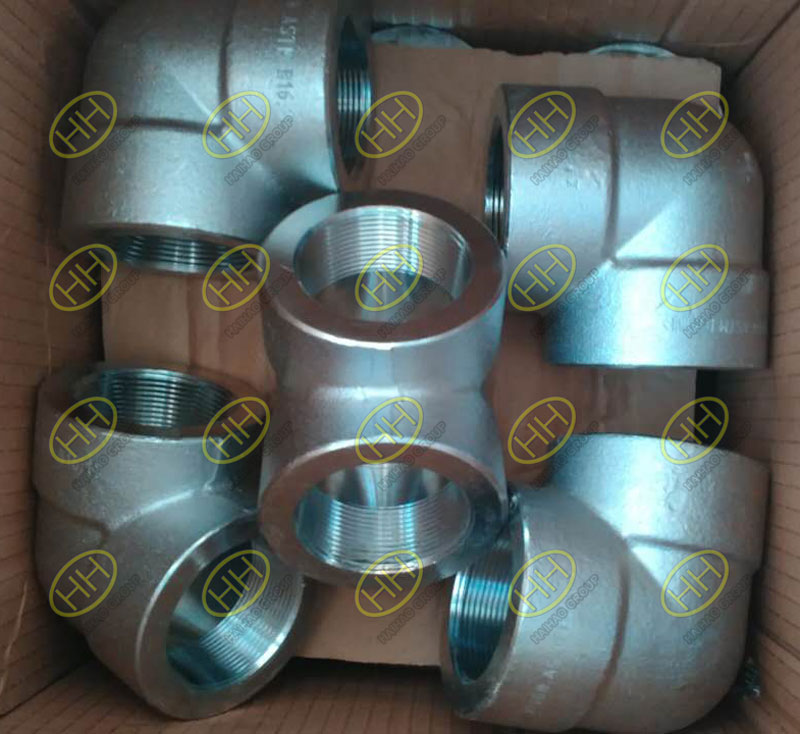Comparison of 316 and 316L and 316Ti stainless steel
316Ti stainless steel has traditionally been designated by German engineers and users, the original steel grade of the UK is 320S31, which is basically a standard carbon 316 stainless steel with titanium stability. At the temperature range of 425 – 815 °C, adding titanium can effectively reduce the risk of intergranular corrosion of stainless steel.
When austenitic stainless steel is heated for a long time at the temperature range of 425 – 815 °C, the carbon in the steel will diffuse to the grain boundary and precipitate chromium carbide. This will remove chromium from the solid solution and leave a lower chromium content near the grain boundary. This is called sensitization. Subsequently, exposed to corrosive environment, grain boundaries are easily destroyed. This type of corrosion is called intergranular corrosion.

ASTM A182 F316L Socket Weld Couplings
The addition of titanium can reduce the risk of intergranular corrosion, as titanium carbides are formed earlier than chromium carbide and have the effect of maintaining the correct distribution of chromium in the whole steel structure. The result is that the regions formed by carbides and grain boundaries do not consume chromium to the level of localized corrosion in the grain boundary region.
Another way to reduce the risk of intergranular corrosion is to reduce carbon content below 0.03%. In this way, the 316 level product is actually the same as 316Ti’s IC. This is the basis of the 316L type.
Under most conditions, 316Ti and 316L applications are interchangeable, that is, 316L is applicable to the application environment that stipulates the use of 316Ti. In water corrosive medium or ambient temperature environment, 316L or 316Ti stainless steel can be used. In some cases, 316L stainless steel may be a better choice.
However, the existence of titanium in 316Ti stainless steel does have some improvements in mechanical strength, especially at high temperatures above 600 degrees C, so it must be prudent to choose 1.4404 as a substitute under these conditions. However, compared with the 316L type, 316Ti at ambient temperature may have poor impact properties.

Stainless steel forged threaded elbow A182 F316 90 degree
The mechanical machinability of 316Ti may also be a problem, as titanium nitride particles can lead to higher tool wear and may not be as cold as cold or cold as 316L stainless steel.
Titanium carbonitride in 316Ti may also lead to high standard polishing surface finish. During the polishing process, titanium carbonitride particles will produce “comet tail” streaks on the polished surface.
Corrosion resistance
There is also some evidence that 316Ti stainless steel may have relatively poor pitting and stress corrosion cracking resistance compared to 316L stainless steel. The stable 316Ti level of the titanium alloy may also be easily attacked in the area affected by the welding heat, which is very close to the melting zone of the carbon nitride in the solid stainless steel matrix.
In addition, the weldability of 316Ti and 316L is similar. NB stabilized filler should be used to weld 316Ti, especially where high temperature welding strength may be important. In other cases, 316L filler should be able to provide water-soluble corrosion resistance of the weld metal that matches the parent 316Ti and 316Ti materials.
